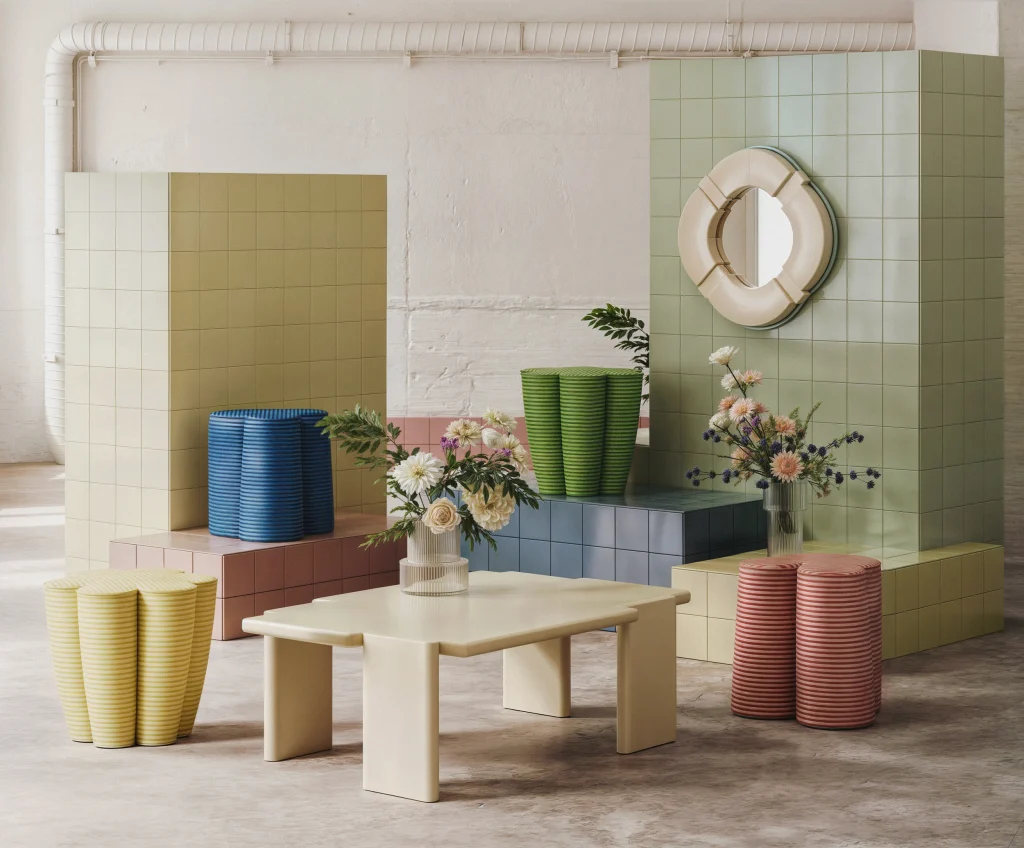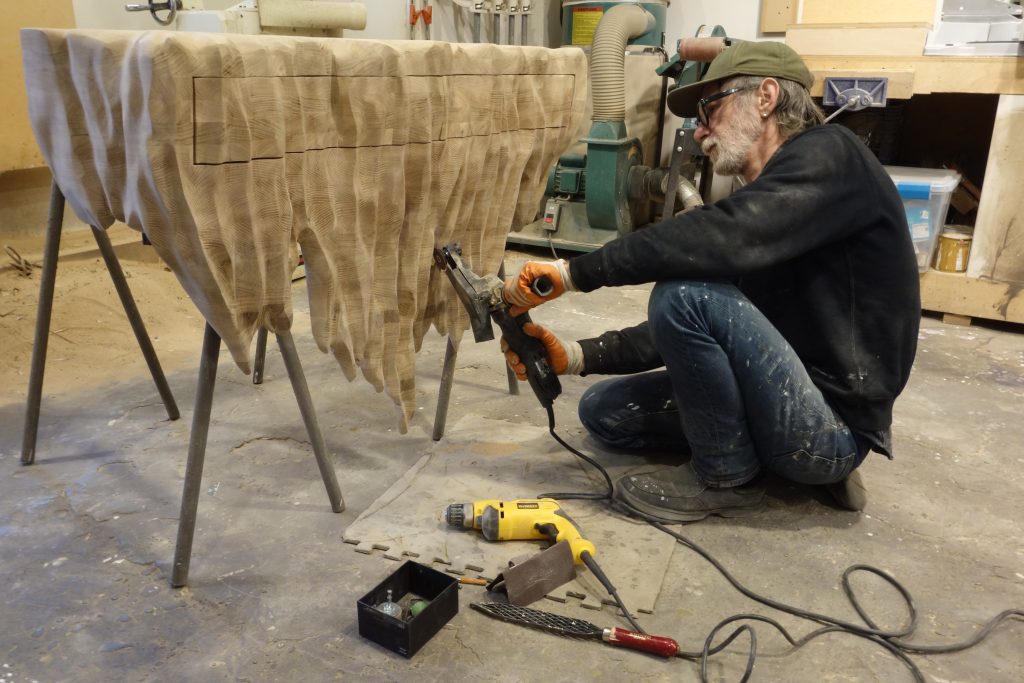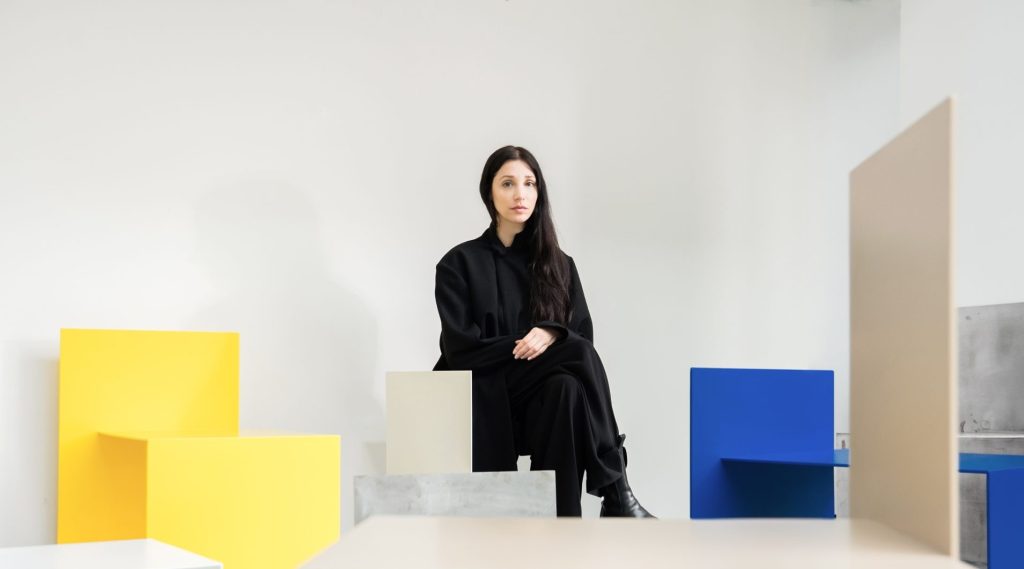
Giulia Cosenza: Sculpting Everyday Rituals with Ceramic Design
Giulia Cosenza, a designer and ceramicist based in Rotterdam, The Netherlands, has been making waves in contemporary ceramics with her distinctive blend of symbolic and functional art. Trained as a designer and interior architect, Cosenza transitioned to ceramics in 2015, where she found a medium that allowed her to explore tactile, gestural, and unstable forms. Her latest collection, “Everyday Sculptures,” embodies her philosophy that art should be an integral part of daily life. This article delves into Cosenza’s practice, the significance of her work, and the unique aspects of her latest collection.
The Designer’s Background


Influence of Design and Architecture
Giulia Cosenza‘s background in architecture and interior design profoundly influences her approach to ceramic art. She describes how her training shapes her work: “My background definitely plays a role in the way I play with shapes and in the way these shapes interact with light and shadows. For me, it is as much about the shapes as it is about the ‘negative space’ between them: void and volume, matter and space interplay in a sculptural almost architectural composition.” This architectural sensibility is evident in the composition and volumes of her ceramic pieces.
Transition to Ceramics
Cosenza’s process diverges from her design roots. While her design background informs the aesthetics, her ceramic work as Domestic Totems is deeply intuitive and artistic. Each piece is hand-shaped on the pottery wheel, requiring improvisation and a connection between mind, hands, and heart.
Everyday Sculptures ADORNO Edition




To celebrate her launch on ADORNO, Cosenza created a special edition of “Everyday Sculptures.” Instead of her signature pristine white stoneware clay, this series uses a specially developed blend of reclaimed terracotta clays. This blend, combined with her wheel-throwing technique, creates a unique marbled texture, emphasizing sustainability and material reuse as integral parts of the design.
Use of Reclaimed Terracotta Clays
The “Everyday Sculptures” collection is characterized by its unique marbled texture, achieved through the use of reclaimed terracotta clays. Cosenza’s choice to use reclaimed materials stems from a desire to make her process more sustainable. She explains: “I wanted to bring this a step further by making a very practical choice into an opportunity for aesthetic expression: I like my work to be ‘visually tactile’ and I was very intrigued by the idea of creating a landscape-like gradient of terracotta shades that would give an impression of layered grounded earth.”




Achieving the Marbled Texture
The marbled texture is not only a testament to sustainability but also adds a visually and tactilely rich element to her pieces. This gradient of terracotta shades creates a sense of depth and connection to the earth, grounding her work in both material and metaphor.
The Evolving Collection
“Everyday Sculptures” is an ever-evolving, ongoing collection of one-of-a-kind wheel-thrown sculptural items, designed and entirely handmade by Giulia Cosenza at her atelier in Rotterdam. Although each ceramic sculpture is wheel-thrown, they appear to be “carved out” of a block and placed on a pedestal.
Emphasis on Sustainability and Materiality
“I always try to make my work ‘visually tactile,’ emphasizing materiality and details,” Cosenza explains. This edition features a carefully crafted marbled layering of terracotta shades, creating a matte texture that transitions from rough to smooth on the outside, giving the impression of the sculptures being chiseled out of a block. Inside of the vessels a subtle crackle effect arises from the clear glossy glaze coating. This special edition showcases Cosenza’s sensibility to details and highlights her innovative approach to texture and materiality.
Balancing Functionality and Symbolism










Initial Impressions and Functional Realizations
Cosenza’s pieces blur the lines between functionality and symbolism. She navigates this balance by allowing the shapes to speak first, with the function becoming apparent only later. This approach is evident in her “Everyday Sculptures” collection, where the initial impression is one of sculptural forms. Only upon closer inspection do viewers recognize the archetypal vase shapes, realizing that these objects, while complete as sculptures, can also serve a functional purpose.
“I let the shapes speak first, in a way where the function would not be obvious. When you look at my Everyday Sculptures, the first thing you see is the play of materials, shapes, compositions; only later you notice the archetypical vase shapes and therefore realize the object is already complete ‘as is’ but the vessel can host a soli-flower or green branch.” This approach challenges viewers to rethink the relationship between art and everyday objects, transforming functional items into meaningful, symbolic pieces.
Techniques and Textures
Scoring and Polishing Methods
The “Everyday Sculptures” collection features a distinctive blend of textures and finishes. Cosenza employs various techniques to achieve the desired effects. She uses a special tool to score the material while the wheel is turning, creating an impression of rawness. To enhance this effect, she polishes and smooths the rest of the piece.
Crackle Glaze Effects
The crackle glaze adds another layer of texture, with micro superficial cracks that create a subtle, controlled effect. “I wish for the Everyday Sculptures to look like they are carved out of a block. To emphasize this impression of rawness, the rest of the piece is polished and made smooth. Lastly, instead of a simple clear glossy glaze, I decided to use a crackle effect one: the clay and glaze have slightly different expansion, causing micro superficial very small un-deep and ‘controlled’ cracks.” This meticulous attention to detail results in pieces that are both visually striking and rich in texture, inviting viewers to engage with them on multiple sensory levels.
Sustainability in Practice
Reclaiming and Reusing Materials
Sustainability is a core principle in Cosenza’s practice. She integrates material reuse into her design philosophy by reclaiming clay and reusing materials as much as possible. This routine of sustainability not only reduces waste but also inspires new ideas and aesthetic features.
Aesthetic Features of Sustainable Practices
“Sustainability is an essential ingredient for any contemporary artist or designer. For me, I want it to feel intentional and not like an ‘afterthought,’ something subtly integrated that speaks of the process and becomes a beautiful aesthetic feature.”
Her use of reclaimed terracotta clays in the “Everyday Sculptures” collection is a prime example of how sustainability can enhance both the process and the final product.
Ceramics as Ritual Tools








Abolishing the Distinction Between Art and Use
Cosenza views her sculptures as ritual tools and domestic totems, designed to intertwine with daily rituals. Her work abolishes the distinction between objects to use and art pieces, focusing instead on pure shapes and abstraction within a context of usability.
Creating Meaningful Everyday Objects
“The intention is to create objects that with their presence play with the ambiguity between an object to use vs an art piece. In my work this distinction is just abolished, bringing the focus to pure shapes and abstraction within the context of usability as rituality.” This philosophy transforms everyday items into meaningful objects that enrich daily life, making art an integral part of everyday experiences.
Challenges and Rewards of Working with Ceramics
The Delicate Process
Working with ceramics presents unique challenges and rewards. The process is delicate, with every step having the potential to make or break the piece. This uncertainty and instability can be daunting, but it also fosters creativity and a deeper understanding of the medium.
Embracing Uncertainty and Instability
“The challenge is definitely a process where every little step matters and can make or break the item. The ‘designing’ and ideation of a piece is such a minute part of this process that it can make you feel powerless. At the same time, it is exactly in this uncertainty and instability that new ideas arise.”
Cosenza’s approach to ceramics encourages a mindset that values the process over the end result, embracing imperfections and the slow, mindful pace of creation.
Cultural Influences




Italian Craftsmanship
Cosenza’s Italian roots and her experiences in Rotterdam influence her artistic practice. Her education in Milan exposed her to masters of the Italian design movement, instilling in her the importance of craft and the thoughtful construction of objects.
Dutch Conceptualism
Her time in the Netherlands, particularly with Droog design, sharpened her conceptual eye and encouraged a playful, unconventional approach to design. “My work is somehow the result of these unique experiences and somehow of bringing together such different worlds and approaches to design.”
The Influence of Bruno Munari
The philosophy of Bruno Munari significantly resonates with Cosenza’s practice. Munari’s belief that there should be no separation between art and life is a guiding principle for her work. She elaborates: “There must be no art detached from life, beautiful things to look at and ugly things to use. This sentence by Munari has always resonated with me in its simplicity and evocativeness.” Cosenza’s intention with “Everyday Sculptures” is to create pieces that accompany and celebrate daily rituals. These sculptures become domestic totems, joyful protectors of the home, and embodiments of the mindful rituals crafted every day.
The Impact of Everyday Sculptures
“There must be no art detached from life, beautiful things to look at and ugly things to use. This sentence by Munari has always resonated with me in its simplicity and evocativeness.”
Giulia Cosenza
Viewer and Collector Experiences
Cosenza hopes that viewers and collectors of the “Everyday Sculptures” collection will see them as totems to their domestic rituals, celebrating life as art. She aims for her pieces to resonate with people on a personal level, reflecting the care and attention that goes into their creation.
Transforming Ordinary Objects into Extraordinary Experiences
“I hope that they will see Everyday Sculptures as totems to their domestic rituals, as a joyful celebration of life as art: for me, the most rewarding outcome would be to have collectors relate to the story of the object as well as to all the care and attention that is behind making a piece with the hands and the heart.”
Cosenza’s work invites viewers to consider the relationship between art and everyday life, transforming ordinary objects into extraordinary experiences.
Blending Design, Sustainability, and Artistry
Giulia Cosenza’s “Everyday Sculptures” collection exemplifies her ability to blend design, sustainability, and artistry into meaningful objects that enrich daily life. Her background in design and architecture informs her sculptural approach, while her intuitive process and commitment to sustainability add depth and texture to her work.


Inspiring and Challenging Perceptions of Art and Everyday Life
Cosenza’s pieces challenge the boundaries between functionality and symbolism, inviting viewers to rethink the role of art in their everyday rituals. Through her meticulous craftsmanship and thoughtful design, Cosenza creates pieces that are not only visually striking but also imbued with meaning and purpose.
The impact of Cosenza’s work extends beyond the individual pieces, influencing how we perceive and interact with art in our daily lives. Her dedication to sustainability and the thoughtful integration of reclaimed materials serve as a model for contemporary artists and designers. As Cosenza continues to evolve her practice and explore new facets of ceramic art, her work will undoubtedly inspire and challenge our understanding of the relationship between art, design, and everyday life.
Discover Available Works by Giulia Cosenza
-

 In stock
In stockEveryday Sculptures – Unique Ceramic Vessels
€1.452 - €1.694 incl. tax This Piece has multiple variants. The options may be chosen on the Piece page -

 Sold
SoldTerra Incognita – Set Of 3 Ceramic Perfume Holders










